TranscriptFilm Credits: WE ARE GRAND CANYON THIS FILM WAS ENVISIONED BY THE GRAND CANYON INTERTRIBAL WORKING GROUP REPRESENTING THE ELEVEN TRIBES TRADITIONALLY ASSOCIATED WITH THE GRAND CANYON SHANANDOAH ANDERSON (SHIVWITS BAND OF PAIUTE) TIM BEGAY (NAVAJO) RICHARD BEGAY (NAVAJO) CHARLEY BULLETTS (KAIBAB BAND OF PAIUTE INDIANS) DANIEL BULLETTS (KAIBAB BAND OF PAIUTE INDIANS) RONNIE CACHINI (ZUNI) CARRIE CANNON (KIOWA) CARMEN CLARK (SHIVWITS BAND OF PAIUTE) MARCIE CRAYNON (HUALAPAI) DARREN DABODA (MOAPA BAND OF PAIUTE) DON DECKER (APACHE) MAE FRANKLIN (NAVAJO) MICHAEL GCHACHU (ZUNI) AUTUMN GILLARD (CEDAR BAND OF PAIUTE) RICHARD GRAYMOUNTAIN (SAN JUAN SOUTHERN PAIUTE) ANA JACKSON (YAVAPAI) STEWART B. KOYIYUMPTEWA (HOPI) LEE LOMAYESTEWA (HOPI) RICHARD POWSKEY (HUALAPAI) VINCENT RANDALL (APACHE) OCTAVIOUS SEOWTEWA (ZUNI) CARLETTA TILOUSI (HAVASUPAI) DIANNA SUE WHITEDOVE UQUALLA (HAVASUPAI) RONALD WADSWORTH (HOPI) BENNETT WAKAYUTA (HUALAPAI/HOPI)
A BRISTLECONE MEDIA PRODUCTION A FILM BY RYAN M CHRISTENSEN IN COLLABORATION WITH GRAND CANYON INTERTRIBAL WORKING GROUP
PRODUCERS JAN BALSOM MIKE LYNDON MINDY RIESENBERG
EDITORIAL CONSULTANT TOMAS ARCEO VINCENT DIAZ (HUALAPAI/WASHOE) WEATHERCARROT KELKIYANA YAZZIE (NAVAJO)
CAMERA ASSISTANT ANDY ROBSON KORY KIRCHNER
ADDITIONAL FOOTAGE SUSAN ALZNER AERIAL FILMWORKS KEITH BYERS/SKYSHIP MEDIA
WITH SPECIAL APPEARANCES BY SHANANDOAH ANDERSON (SHIVWITS BAND OF PAIUTE) TIM BEGAY (NAVAJO) RONNIE CACHINI (ZUNI) CARMEN CLARK (SHIVWITS BAND OF PAIUTE) AUTUMN GILLARD (CEDAR BAND OF PAIUTE) AUDRA JONES (HAVASUPAI) JUSTIN JONES JR. (HAVASUPAI) LORA JONES (HAVASUPAI) ED KEABLE (NPS) ALBERT LAUGHTER (NAVAJO) LEE LOMAYESTEWA (HOPI) STERLING SELANA (HUALAPAI) ELYSSA SHALLA (NPS) KRISTOPHER SIYUJA (HAVASUPAI) EDMOND TILOUSI (HAVASUPAI) DIANNA SUE WHITEDOVE UQUALLA (HAVASUPAI) JAMES UQUALLA (HAVASUPAI) JORIGINE PAYA (HUALAPAI) JANELLE POWSKEY (HUALAPAI) RICHARD POWSKEY (HUALAPAI) VINCENT RANDALL (APACHE) OCTAVIOUS SEOWTEWA (ZUNI) CARLETTA TILOUSI (HAVASUPAI) JAMES UQUALLA (HAVASUPAI) RONALD WADSWORTH (HOPI) AVÉ WATAHOMIGIE-CORLISS (HAVASUPAI) OPHELIA WATAHOMIGIE-CORLISS (HAVASUPAI)
IN MEMORIUM CHARLEY BULLETTS (KAIBAB BAND OF PAIUTE INDIANS) 1974-2020 RONNIE CACHINI (PUEBLO OF ZUNI) 1965-2022 VINCENT RANDALL (YAVAPAI APACHE NATION) 1940-2023
CHARLIE BULLETTS MEMORIAM FOOTAGE JILL STAUROWSKY
PHOTOGRAPHS USED WITH PERMISSION FROM GRAND CANYON NATIONAL PARK ARCHIVES HAVASUPAI TRIBE SHIVWITS BAND OF PAIUTE PIPE SPRINGS NATIONAL MONUMENT
"We Made it, Honoring Current Life Beings" PERFORMED BY REX TILOUSI
"North Wind Blowing" PERFORMED BY SHANAN MARTINEAU
SPECIAL THANKS KIM BESOM MARIE BUCK LAURA CROSSEY RADER LANE KARL KARLSTROM THERESA MCMULLAN JENNIFER O’NEILL MICHAEL QUINN ELYSSA SHALLA TODD STOEBERL
SPECIAL THANKS TO GRAND CANYON CONSERVANCY STAFF ALL FUNDING FOR THIS PROJECT WAS PROVIDED BY GRAND CANYON CONSERVANCY, OFFICIAL NON-PROFIT PARTNER OF GRAND CANYON NATIONAL PARK.
Visit our keyboard shortcuts docs for details
"We Are Grand Canyon" is a heartfelt film, welcoming visitors to Grand Canyon National Park from those who have called it home since time immemorial – Grand Canyon's 11 tribal communities. A project several years in the making, "We Are Grand Canyon" is a joint creation by the Intertribal Working Group, Grand Canyon National Park, and Grand Canyon Conservancy, and was filmed and edited by Ryan Christensen of Bristlecone Media. Film Credits are listed in the transcript below the video player. The Grand Canyon region has been home to Native people since time immemorial.The Grand Canyon is a place of immeasurable importance to Native people in the Southwest. The park shares boundaries with three federally recognized tribes; a total of 11 federally recognized tribes are traditionally associated with what is now Grand Canyon National Park. Park staff have been working with tribal people for more than 40 years, developing numerous innovative and collaborative tribal partnerships during that time. 
Traditionally Associated TribesThere are 11 tribes that have historic connections to the lands and resources now found within Grand Canyon National Park.

NPS, Adapted from Stephanie Smith, 2020 Grand Canyon National Park Tribal Engagement ReportA biennial report highlighting Grand Canyon National Park tribal programming in 2022-2023.
Working with Indigenous communities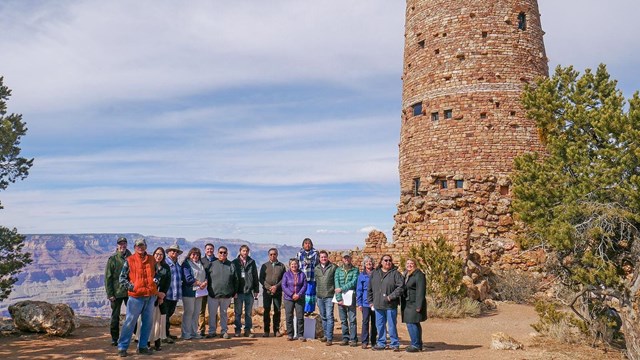
Desert View Intertribal Heritage Site
See the many exciting changes in store for the future of Desert View, including a new tribal run welcome center and improved paths. 
Native Vending and Demonstration Program
Discover the rich Native American culture at Grand Canyon National Park through our diverse tribal vending and demonstration programs. 
Grand Canyon Intertribal Working Group
The ItWG's purpose is to establish intertribal programming and first-voice cultural interpretation across Grand Canyon National Park. Grand Canyon Tribal Affairs NewsAdditional Resources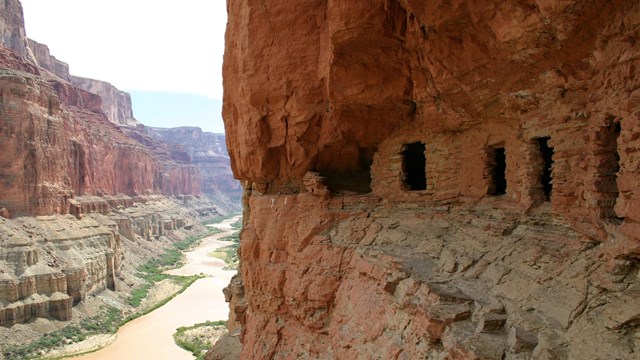
Associated Tribes of Grand Canyon
Learn more about Associated Tribes of Grand Canyon on Arizona State University's Nature, Culture, and History at Grand Canyon website. 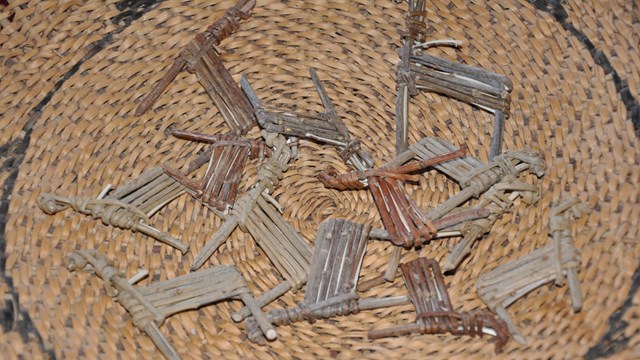
Archaeological Resources
Humans have present on the Grand Canyon landscape for up to 12,000 years. Find out what archaeologists have found inside the park. 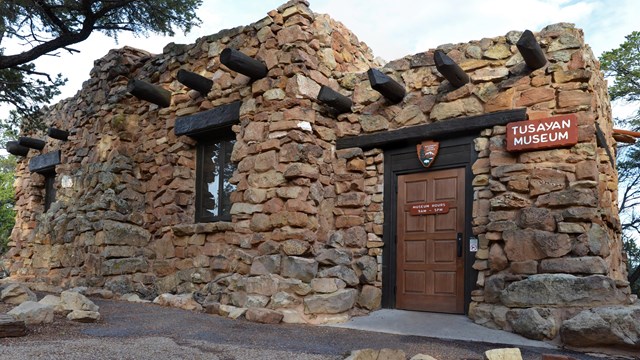
Tusayan Pueblo and Museum
CLOSED FOR THE WINTER. Visit this 800-year-old ancestral Puebloan site and learn about people who called Grand Canyon home. 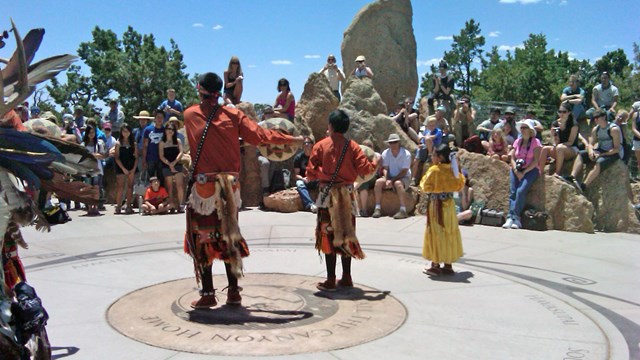
The Voices of Grand Canyon
Visit Grand Canyon Trust's website to see what it means to call the Grand Canyon home. 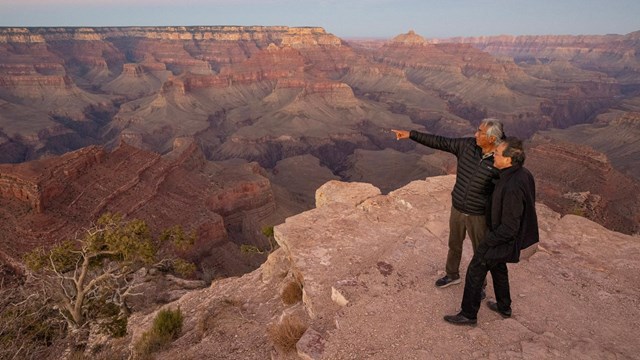
Arizona Native Tourism
The Arizona American Indian Tourism Association promotes the development of Indian Tourism while respecting the cultural integrity of tribes 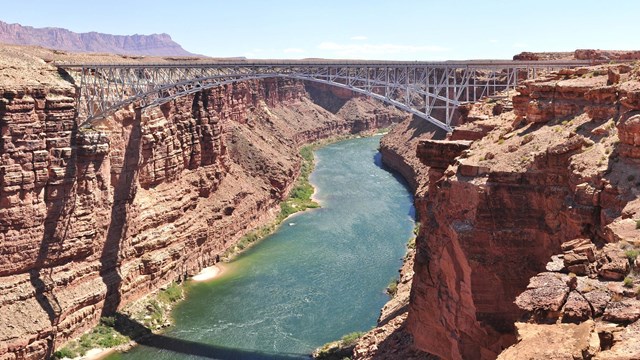
Partnering with AIANTA
The American Indian Alaska Native Tourism Association serves as the national voice for American Indian nations engaged in cultural tourism. |
An official website of the United States government
Here's how you know
Official websites use .gov
A
.gov website belongs to an official government
organization in the United States.
Secure .gov websites use HTTPS
A
lock (
) or https:// means you've safely connected to
the .gov website. Share sensitive information only on official,
secure websites.
